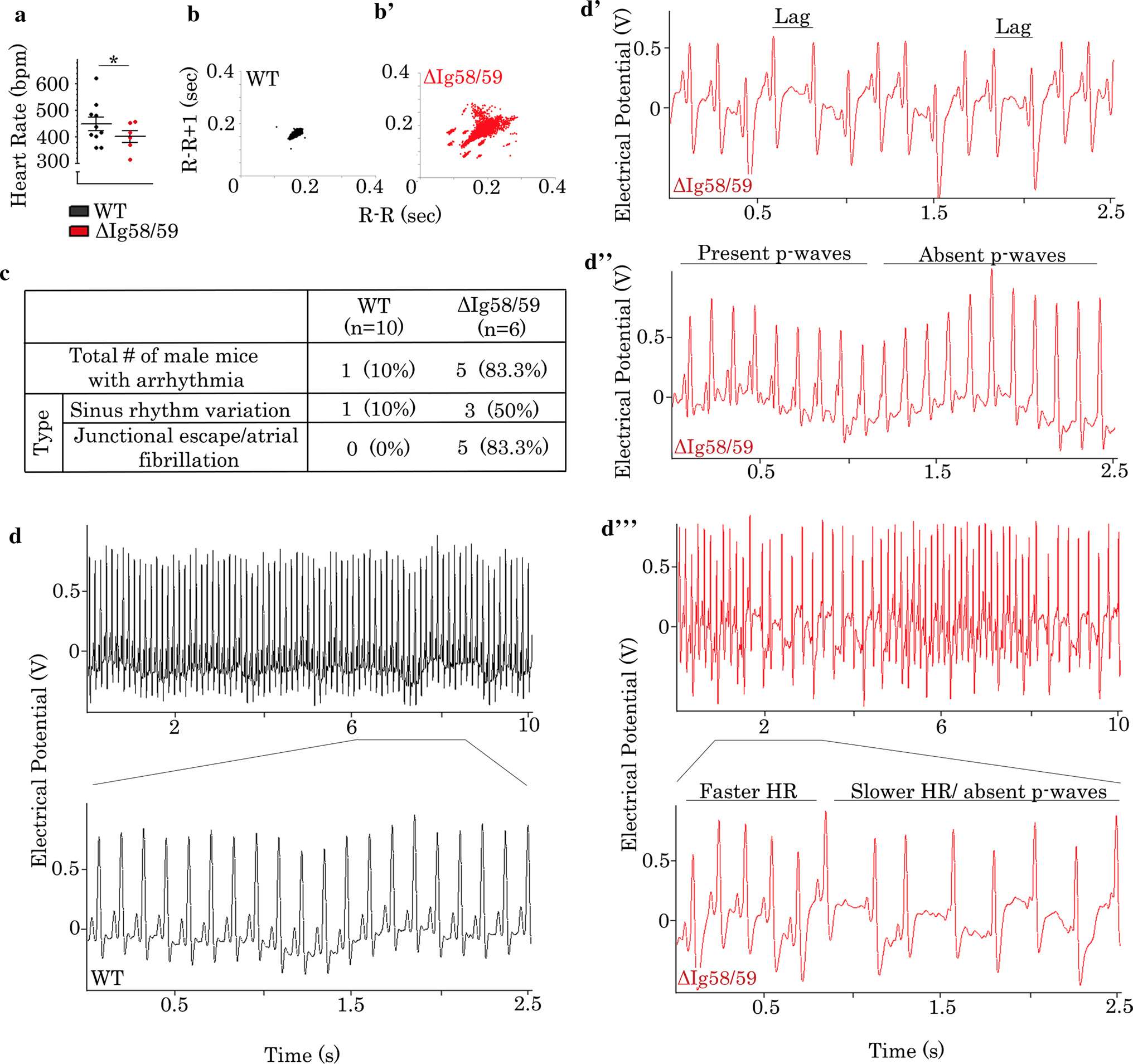Fig. 4.

Sedentary male Obscn-ΔIg5859 mice develop bradycardia and severe arrhythmia at 12 months of age. a Sedentary 12-month-old male Obscn-ΔIg5859 mice demonstrated significant bradycardia compared to wild type; t test, *p < 0.05; n = 10 (wild type), n = 6 (Obscn-ΔIg5859); data points represent individual animals. b–b’ Poincaré plots demonstrated increased R–R interval variability in Obscn-ΔIg5859 mice (b’) compared to wild type (b) at 12 months. c The number and percentage of 12-month-old male wild-type and Obscn-ΔIg5859 animals that experienced each type of arrhythmia under sedentary conditions is shown. d–d” Representative ECG traces of sedentary 12-month-old male wild-type (d) and Obscn-ΔIg5859 (d’–d’”) mice revealed the presence of sinus rhythm variation (d’) and junctional escape (d”) in the Obscn-ΔIg5859 model, with more severe cases presenting both arrhythmic phenotypes simultaneously (d’”)
